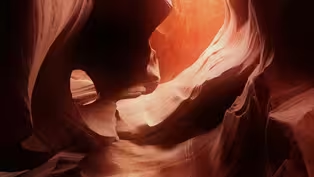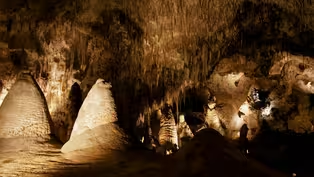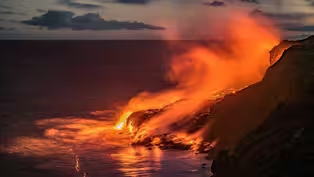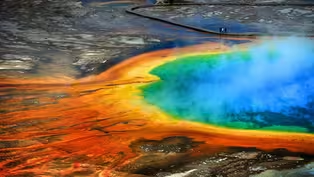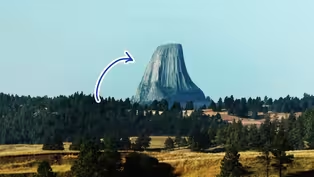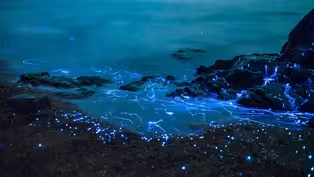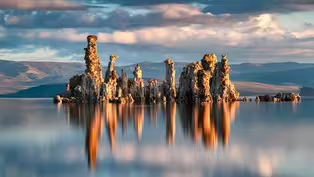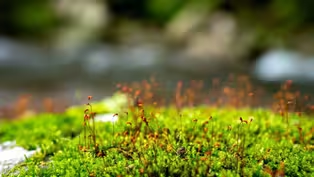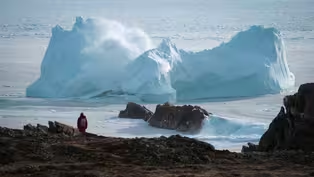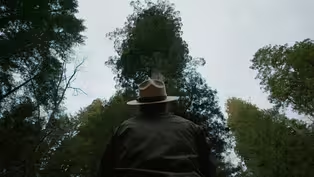
This Is Not a Forest
Season 2 Episode 1 | 10m 6sVideo has Closed Captions
Meet Pando, an ancient tree in Utah that has grown into one of Earth's largest living wonders.
Pando, Latin for 'I spread,' appears to be a forest but is actually one massive tree. Weighing 13 million pounds, Pando is one of the world’s largest living organisms. It has thrived in Utah's Fishlake National Forest, spreading across 106 acres with 47,000 stems. Find out how human intervention has both threatened its survival and sparked a passionate mission to protect it.
Problems playing video? | Closed Captioning Feedback
Problems playing video? | Closed Captioning Feedback

This Is Not a Forest
Season 2 Episode 1 | 10m 6sVideo has Closed Captions
Pando, Latin for 'I spread,' appears to be a forest but is actually one massive tree. Weighing 13 million pounds, Pando is one of the world’s largest living organisms. It has thrived in Utah's Fishlake National Forest, spreading across 106 acres with 47,000 stems. Find out how human intervention has both threatened its survival and sparked a passionate mission to protect it.
Problems playing video? | Closed Captioning Feedback
How to Watch Untold Earth
Untold Earth is available to stream on pbs.org and the free PBS App, available on iPhone, Apple TV, Android TV, Android smartphones, Amazon Fire TV, Amazon Fire Tablet, Roku, Samsung Smart TV, and Vizio.
Providing Support for PBS.org
Learn Moreabout PBS online sponsorshipMore from This Collection
A documentary series from Nature, Atlas Obscura and PBS Digital Studios dedicated to unpacking the stories behind North America's strangest, most unique natural wonders.
Truffles Are Hiding a Dirty Little Secret
Video has Closed Captions
How are truffles key to the survival of the forest ecosystem at large? (7m 11s)
Why Antelope Canyon Never Looks The Same Twice
Video has Closed Captions
What does it mean to preserve a place that is defined by it's impermanence? (6m 49s)
This Upside Down Cave Is a Microscopic Warzone
Video has Closed Captions
Microbial warfare has been raging for thousands of years deep below the Chihuahuan Desert. (5m 57s)
This Volcano Won't Stop Erupting
Video has Closed Captions
What does one of Earth's harshest environments teach us about planet survival? (9m 12s)
What NASA Is Looking For In Yellowstone National Park
Video has Closed Captions
At 87º Celcius, the Grand Prismatic Spring is a beacon of microbial life and discovery. (6m 41s)
The Story Behind This Giant Rock in the Middle of a Field
Video has Closed Captions
At 50 million years old, the origins of Devils Tower or Bears Lodge remains a mystery. (6m 57s)
What Makes The “Northern Lights of the Sea” So Magical?
Video has Closed Captions
An ancient and modern mystery, what about bioluminescence inspires such obsession? (8m 26s)
What Are These Strange Towers Growing Out of This Lake?
Video has Closed Captions
Over half a million years old, the story of Mono Lake is one of survival. (8m 54s)
You Aren’t Paying Enough Attention to Moss
Video has Closed Captions
At 450 million years old, moss may hold the key to surviving our rapidly warming planet. (5m 44s)
Why Do Hundreds of Icebergs Keep Visiting This Town?
Video has Closed Captions
What are icebergs doing so close to land and why must we keep an eye on them? (7m 5s)
Redwoods Shouldn't Be So Tall. Here's Why They Are
Video has Closed Captions
What makes the Coast Redwood, a tree as old as the dinosaurs, epically singular in nature? (7m 30s)
Providing Support for PBS.org
Learn Moreabout PBS online sponsorship- Pando is unique because of its size.
Our scientists are telling us that it's the largest tree in the world.
It covers over a hundred and six acres.
It weighs about thirteen million pounds.
- Pando puts a perspective on the word tree because genetically, it's all one tree.
- The Pando has been around long enough that I firmly believe it knows how to take care of itself.
But as human beings, we've intruded, we've created systems, we've created problems.
- What started as a single aspen seed, hundreds or even thousands of years ago, sprouted and grew, and grew, and grew into one of the world's largest known organisms.
But now, it faces critical threats.
How did Pando manage to survive so long?
And why could that change?
- We are in Fishlake National Forest, in Utah, elevation around nine thousand feet.
When I'm painting in the Pando, I'm sitting inside of a living organism that surrounds me in 360 degrees.
This is called color matching.
Warm this one up a little bit.
- Pando is a giant aspen clone first identified as a single organism in the late 1960s.
And what a clone is, is it's genetically identical stems that are actually connected underground.
Aspen systems reproduce clonally.
That is, they have new sprouts coming up from the roots system called juveniles or suckers or sprouts.
And they are genetically identical to the parent.
It's just that Pando has been very successful at that for a very long time.
But the other thing is, you know, why this longevity and this size in one place?
And to the best of my speculation, I can say that the terrain is fairly even, and the climate must have had some broad stability to it for a long period of time.
- Pando means "I Spread" in Latin.
And we're actually seeing the Pando spread out.
- To our knowledge, Pando is the largest known tree on Earth.
So it becomes special just because of its extraordinary spread.
- We're not used to thinking of forests in this way.
We're used to thinking of them as a bunch of individual trees.
Well, this very large clone, about forty-seven thousand mature stems, is all one living organism.
So the idea here is I'm walking this along this transect, which is randomly placed in the forest, and then reproduced at every site, two meters wide here looking for the condition of all the trees.
So that'll give us some sense of what's going to survive to the next age and size class through time.
So here's an example of a younger aspen that's been browsed a little bit.
So I would count it as a young juvenile at a certain height class.
And also that it's been recently browsed.
- How are we treating Pando?
Which we know is so important ecologically, aesthetically, culturally, biodiversity-wise.
But it's not looking good for Pando.
- Pando's in trouble now because we've changed the cycle.
The number one factor is no doubt animal browsing.
- Animals like to eat aspen.
We refer to it as herbivory or browsing.
- The deer and elk are managed populations here.
They are kept at a high population level for hunters.
- We've also eliminated most of our predators, mostly wolves, black bears, and grizzly bears, about a hundred years ago in this part of the world.
And those kind of things, they not only keep the numbers of herbivores in check, but they keep them sort of moving a little.
And that's really critical.
If we can't have things with sharp teeth, how do we sort of regulate both the movement and the numbers of herbivores?
- We also have permitted livestock grazing in the area.
And we're also mindful of the effects they may be having.
- We're at the north end of Fish Lake.
Pando clone's at the south end.
These cows will walk down and they'll surround Pando clone and they'll be hard on Pando, for trampling young sprouts, for eating sprouts.
- Pando is so dependent on those young stems.
They're never advancing to an intermediate and then a mature stage.
And these older trees were getting near the end of their life, about a hundred or a hundred and twenty years of age.
A similar analogy would be if we walked into a village, and everybody in that village was eighty or eighty-five or ninety years of age.
There's not a great future for a community like that.
- We've taken measures, and one of the things that we have done is fenced off portions of the Pando clone, and we're looking to fence off more.
About ten years ago, we constructed this fence below the highway.
It's evident that, with the fencing, you can see how fast they grow.
Once they can get up to about six feet tall, then they're successful on their own.
- All of these red dots pretty much outline the fenced-in portion that we're in of Pando clone.
Each one of these photo points was taken in 2014, ten years ago.
And at this spot, you can't see any young trees in there.
And now, you can see the yellow of all the young trees that have come here in ten years.
You know, to me this means all these are restoration.
All these are the new future of Pando clone.
- There are other threats to any ecosystem, and that holds true for Pando and aspen itself.
Aspen trees are easily infected with a whole bunch of pathogens and insect attacks and so on.
Fires near or around aspen can kill them too.
And we also have this factor of a changing climate.
Now, we know that aspen forests are very adaptive, and they respond well to a lot of disturbances through time.
However, when you add animal browsing alongside of it, all of those things can be detrimental to aspen.
- I've been coming to Pando for my whole lifetime.
Sometimes I question why we should bother to try to protect the Pando.
Isn't it wise enough and old enough to take care of itself?
And I think the answer is probably yes.
It may go through some hard times, but we have to recognize that we are part of the hard times.
- When something is very large or very old, it becomes a platform to talk about some really important ecological issues.
Clearly, that finger points back at us as being instigators of some of the problems.
However, the good side of it points at us in terms of being the folks that are going to initiate some corrective actions.
- I think the Pando is a reflection on us and how we treat it, how we respect it.
Excuse me.
Yeah.
You know, we're dependent on it.
I'm sorry.
Yeah.
Yeah, that hit a nerve.
But, we have to do our part.
We have to be mindful.
It's a reflection on how, you know, I'm sorry, but we treat each other.
So I'm passionate about it.
- I'm hopeful that my daughter will not see the death of the Pando, as some have proclaimed.
Hopefully after I'm gone, my paintings will still be appreciated by people who come to see the Pando in its next iteration of time.
- Upon my last visit in the early fall of 2024, I saw some really remarkable recovery taking place, even quite a bit outside the fenced areas.
But overall, what I call Pando triage, is trying to get the patient up and living, breathing well, reproducing.
Now we're on to the next step.
What does the future look like?
- We have a lot of stakeholders and interests here in the Fish Lake basin from all different walks of life.
It takes everybody coming together to solve some of these issues.
- Pando was here long before anyone was painting it, long before anyone was measuring it, long before anyone was running roads through it.
I'm glad that there are defenders of specifically Pando.
Without a small group of people sounding the alarm, it would have been lost.
- Aspen systems in general, including Pando, have the potential to go on and on forever.
But part of that process is the ability to not be so focused on what's happening here and now in the current generation, but to have the engine really packed for exploding into the next generation with thousands of new stems, or trees, as we might think of them.
That's the direction that we want to head Pando in.


- Science and Nature

A documentary series capturing the resilient work of female land stewards across the United States.




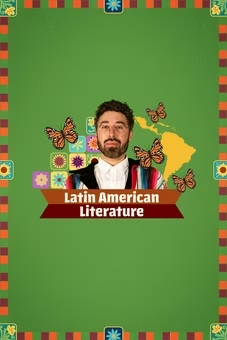







Support for PBS provided by:


